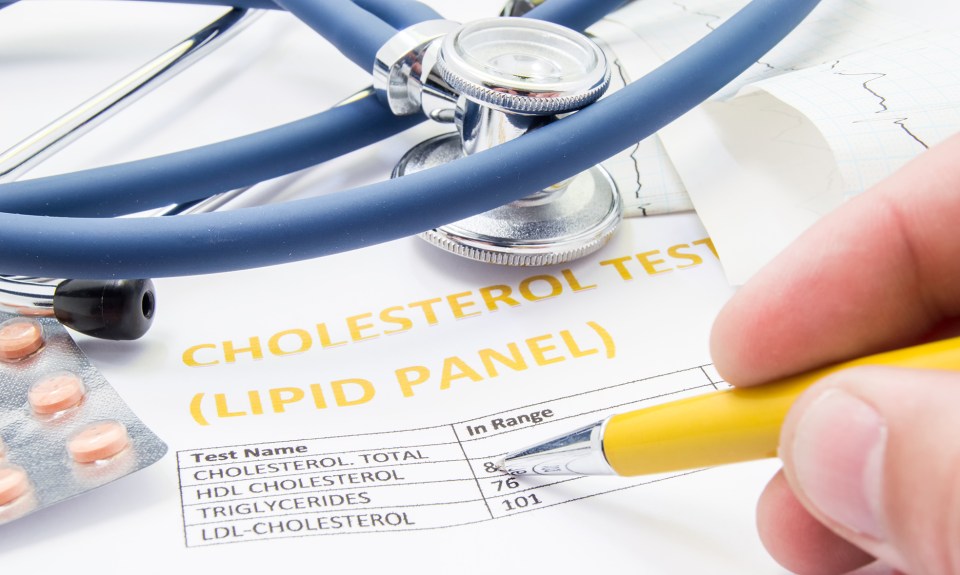If you are confused about cholesterol, you are not alone. Good cholesterol, bad cholesterol, what is it? And why does it matter?
Cholesterol is a fat-like product made by the liver. Although cholesterol is sometimes viewed negatively, not all cholesterol is bad. Cholesterol is found in every cell in the body and plays an important role in making hormones, vitamin D and cell membranes. Your body produces most of the cholesterol found in the bloodstream, but some comes from the foods you eat.
For decades, health experts have recommended limiting animal products containing cholesterol such as meats, poultry and eggs, to control cholesterol levels. And while a high intake of dietary cholesterol can affect the blood cholesterol level in some individuals, particularly those with diabetes, newer research has found that carbohydrates and high fat foods may play an even bigger role in raising blood cholesterol.
Causes of High Cholesterol
Certain medications and medical conditions are associated with high cholesterol. Lifestyle and genetics also affect cholesterol numbers.
Lifestyle factors that can lead to high cholesterol include:
- Being overweight or obese
- A diet high in saturated fats or trans fats
- Sedentary or inactive lifestyle
- Smoking
- Drinking too much alcohol
- Lack of sleep or poor-quality sleep
- Stress
Familial Hypercholesterolemia
Some families pass along a gene that causes cholesterol numbers to climb even when you are following all the lifestyle rules about healthy eating, exercise and weight control. This condition is known as familial hypercholesterolemia, or FH, and it affects approximately 1 in every 250 people.
While cholesterol levels typically rise with age, those with FH have high LDL, or bad cholesterol levels, from birth. If untreated, individuals with familial hypercholesterolemia are 20 times more likely to develop heart disease.
Health Risks
The danger of high cholesterol is that it can lead to cardiovascular disease and stroke. Cholesterol moves through the body in the blood. When cholesterol mixes with other products, it can form a build-up of hard plaque on the artery walls. The plaque causes narrowing of the arteries, a condition known as atherosclerosis, increasing the risk of cardiovascular disease and stroke.
Screenings
There are no symptoms of high cholesterol, so the best way to determine your cholesterol level is through testing.
Since the fatty cholesterol cannot be dissolved in the blood and doesn’t travel easily, it needs a vehicle to transport it throughout your body. The liver solves this problem by packaging small amounts of cholesterol and fat in a protein shell called a lipoprotein. This allows the cholesterol to move through the bloodstream to the cells. The two types of lipoproteins that carry cholesterol are low-density lipoproteins (LDL) and high-density lipoproteins (HDL). These lipoproteins play an important role in determining your risk for cardiovascular disease.
To measure your blood cholesterol level, your doctor may order a test called a lipid panel or lipid profile. This is a fasting blood test that looks at the following:
- Low Density Lipoproteins or LDL
This is known as the bad cholesterol because when LDL levels are high, plaque forms on artery walls causing them to narrow, leading to reduced blood flow. If the plaque ruptures, or breaks off, it can cause heart attack or stroke. Normal range for LDL is 100mg/dL or lower.
- High Density Lipoproteins (HDL)
Referred to as the good cholesterol, HDL gathers cholesterol from your blood and carries it back to the liver where it is removed from the body. HDL levels of 40mg/dL or higher is optimal.
- Triglycerides
Triglycerides are the most common fat in the body. They are made in the body but also come from the foods you eat. Your body burns the fat for energy but excess calories that are not used end up stored as fat cells. High triglyceride levels contribute to atherosclerosis, leading to heart disease and stroke. Aim for triglyceride levels of 150mg/dL or lower.
- Total Cholesterol
Total blood cholesterol is determined by adding your LDL and HDL cholesterol numbers to 20% of your triglyceride level. A total cholesterol level of less than 200mg/dL is considered normal.
Cholesterol Screening Recommendations by Age
Identifying high cholesterol in children and adults allows for earlier treatment and can reduce the risk of heart disease. The National Heart, Lung, and Blood Institute recommends the following:
- Age 19 and younger: Screening beginning at age 9-11 and repeated every five years. If there is a family history of high cholesterol, heart attack or stroke, screenings may be started even sooner.
- Age 20 to 65: Screenings should continue every five years until age 45 for men and age 55 for women. Beyond those ages, screening should be done every one to two years.
- Adults over age 65: Yearly screenings are recommended.
Treating High Cholesterol
The first step in treating high cholesterol is making lifestyle changes.
- Clean up your diet. Replace sugar and saturated fats with whole grains, veggies and fruit.
- Increase physical activity. Regular exercise can lower LDL and triglycerides while raising HDL.
- Manage your weight. Losing just 3% to 5% of your weight can increase HDL and lower LDL.
- Stop smoking. Tobacco use is associated with higher triglyceride levels and lower HDL. It also contributes to plaque formation and narrowing of the arteries.
- Reduce stress. Chronic stress can impact cholesterol, raising bad cholesterol levels while lowering good cholesterol.
If lifestyle changes alone fail to bring your cholesterol to a healthy level, your healthcare provider may prescribe medication. There are many types of cholesterol lowering medications including the following:
- Statins. The most common type of medication prescribed to lower blood cholesterol, these drugs block the production of cholesterol in the liver. They are effective in lowering LDL and may also reduce triglycerides and increase HDL.
- Bile acid sequestrants. These drugs work in the intestine to reduce LDL.
- Ezetimibe. These medications may be used to treat familial hypercholesterolemia and work by blocking the absorption of cholesterol in the intestine.
- PCSK9 inhibitors. Injectable medication that may be used with statins to lower LDL in those with familial hypercholesterolemia or who are determined to be high risk for stroke or heart attack.
Foods that can Lower Cholesterol
Reducing your intake of saturated fat, trans-fat, and sugary foods isn’t the only way to reduce your cholesterol. Boosting your diet with the below heart-healthy choices can lower blood cholesterol in a tasty way:
- Oats and other high fiber foods. The soluble fiber in oats and other whole grains can block the absorption of cholesterol in the body. Beans, Brussel sprouts, eggplant, apples and pears are also high in soluble fiber.
- Nuts. Eating a variety of nuts including walnuts, almonds, cashews, pecans, hazelnuts, macadamia and Brazil nuts two to three times a week can reduce LDL levels.
- Fatty fish. Since they are packed with omega 3 fatty acids, eating fatty fish such as trout, tuna, salmon and herring twice weekly can lower triglycerides and LDL.
- Avocados. Low in saturated fat and high in fiber, eating one avocado a day can improve cholesterol levels.
According to statistics from the Centers for Disease Control and Prevention, 38% of American adults have high blood cholesterol. Talk with your doctor about a cholesterol screening and how to lower your risk.
The content of this site is for informational purposes only and should not be taken as professional medical advice. Always seek the advice of your physician or other qualified healthcare provider with any questions you may have regarding any medical conditions or treatments.



